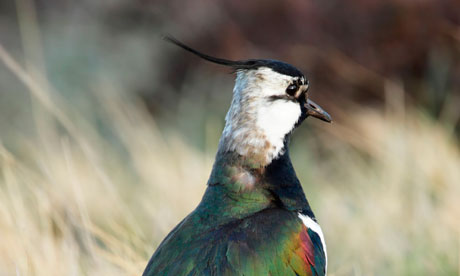
Distance 6 or 9 miles (9.6 or 14.5km)
Classification Moderate
Duration 2 to 3 hours
Begins Yockenthwaite bridge
OS grid reference SD904790
Walk in a nutshell
A circular walk in the Yorkshire Dales taking in a slice of the river Wharfe. Starting off with a steep climb out of Yockenthwaite (which means "Eoghan's clearing in a wood"), the route hugs the fellside to the hamlet of Cray. Dropping down to Cray Gill, it follows the banks of the Wharfe all the way home. For keen walkers there's an optional longer route to Buckden and its exhibition of the area's history in Townhead Barn (which adds an extra 3 miles).
Why it's special
The glaciated valleys you'll explore on this walk combine limestone pavement with flower-rich hay meadows. Centuries of farming have created many interesting wildlife habitats, from hillside streams and craggy outcrops to blanket bog and drystone walls, making it a nature lovers' nirvana. Come and see what's in bloom.
Keep your eyes peeled for
The limestone pavement in Strans Wood comprises blocks ("clints") and cracks ("grikes"). Wild thyme, limestone bedstraw, and bird's foot trefoil inhabit the clints, and shade-loving plants such as hart's tongue fern grow in the grikes. The roadsides are adorned with sweet cicely and bistort, while the meadows are painted with meadow cranesbill, meadowsweet, blue moor grass and the carnivorous common butterwort. Above them fly yellow wagtails, while down on the river you might see curlews, lapwings, goosanders and kingfishers. Butterflies to look out for include the common blue and green-veined white. And check out the tiny craven dor snails on old walls and moist, shaded rocks. The sparkling river Wharfe is home to bullhead (a small fish), crayfish, brown trout, eel and grayling – the presence of the last three demonstrating just how clean the river is. Away from the wildlife, Scar House was visited in 1652 by Quaker founder George Fox who converted the farmer. The house later became a Quaker meeting place.
Recover afterwards
At Hubberholme's family-owned George Inn (thegeorge-inn.co.uk), with flagged floors, stone walls, mullioned windows and good food.
If it's tipping down
Head south to Skipton Castle (skiptoncastle.co.uk), one of the most complete medieval fortresses in England.
How to get there
From Skipton railway station take the Pride of the Dales 72 bus to Buckden and pick up the route from there.
Step by step
1 Start at Yockenthwaite bridge and follow the footpath signposted to Scar House. Turn right off the farm track at another footpath sign, going through Strans Wood and emerge on to the open hillside.
2 Continue towards Cray keeping the woodland boundary on your right.
3 Cross Crook Gill and carry on through hay meadows to Cray. Hay is a valuable crop, so please walk in single file.
4 Drop down to your right when entering Cray and follow a footpath along Cray Gill to a road. Turn right and walk 400m until you reach Hubberholme.
5 Return to Yockenthwaite via a footpath behind Hubberholme church and follow this route beside the river Wharfe all the way back.
6 You can add an optional extra 3 miles (4.8km) to this route by visiting Buckden: take the fellside path from Cray, then take a riverside route from Buckden over to Hubberholme.

